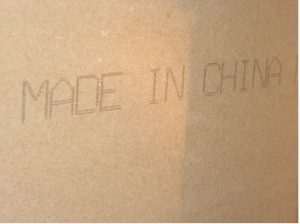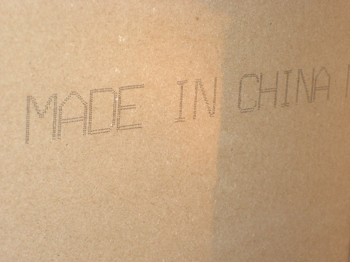
“Chinese” Drywall
Complete General Contractors, as an expert for a number of insurers and attorneys throughout the Southeast, has been noticing a number of problems reported involving homes that were constructed over the past several years with drywall imported from China which corrodes copper and metal surfaces and often gives off a foul odor.
The drywall, known as Chinese Drywall, has been reported in 14 states and is estimated to have been installed in more than 100,000 homes, including houses rebuilt after Hurricane Katrina. Drywall, also known as wallboard or plasterboard, is typically made from mineral gypsum, but a shortage led suppliers to import drywall from mines in China.
Of course, not all drywall manufactured in China is tainted. A common theory alleges that drywall imported from China in 2004 and 2005 was made with waste materials from scrubbers on coal-fired power plants, also called “fly ash”. These materials can leak into the air and emit one of several sulfur compounds. Others believe the drywall may have been kept on barges at sea for months awaiting permission for importation. http://www.cpsc.gov/info/drywall/index.html
Industrial hygienists will be helpful in determining such compounds as butanethial, carbonyl sulfide, hydrogen sulfide, mercaptan, methylthio pyridine, sulfuric acid, sulfurous dioxide and strontium sulfide which have been found in Chinese drywall.
The Environmental Protection Agency has declared many of these compounds to be toxic. The Florida Department of Health (http://www.dep.state.fl.us) continues to maintain that the levels found in Chinese drywall are not high enough to present imminent or chronic health hazards, but what about long-term exposure to these highly toxic compounds? Health officials are most concerned that the Chinese drywall fumes could be especially dangerous for sensitive populations. These include the very young and the elderly. People with asthma and chemical sensitivities would be at greatest risk. These worries have caused many people to flee their homes in an effort to preserve their health. These issues are similar to the concerns expressed over severely mold damaged properties in years past.
There has been much discussion as to the proper restoration of these properties and how much of the interior requires removal and replacement. Complete General Contractors has been asked to price these protocols and provide restoration services, similar to our mold remediation and fire restoration services. Many are also concerned that the drywall issues will diminish the value of their homes.

Why is Chinese Drywall destroying homes?
This is still to be determined, but some believe that humidity causes the sulfur in the tainted drywall to off-gas, (to migrate into the indoor air), and when these gases combine with moisture, they not only create a noxious odor, but it corrodes copper and other metals. This is likely why one of the first places that have been tied to these problems is the HVAC coils. The process of air condition includes the removal of water from the air through condensation providing a ready source for water right inside the HVAC air handler closet. On air conditioning coils they create sulfuric acid. This, in turn, appears to be dissolving solder joints and copper tubing — creating leaks, blackening the coils, and even causing the system to fail. Pipes and wiring especially low voltage may also be deteriorating because of the Chinese drywall fumes. The particulates from Chinese drywall may also invade and adhere to other building materials in the home’s structure, as well as to personal objects within the home.
How to tell if your home has toxic Chinese drywall?
The best way to tell if your home has toxic Chinese drywall is to have a person with experience evaluate your home. Typically a visual inspection will alert the need for a more quantitative review. Some of the warning signs are rotten egg or ammonia smells. Have you had repeated A/C problems? Does the copper tubing on the outside of your A/C look corroded? Look for copper turning black or appliances and equipment failing prematurely, especially TVs and cable boxes — even personal jewelry turning black. Another way to determine if drywall in your home is from China, locate the “Made in China” markings on the back of the sheet of drywall most easily accessed from the attic.
Problematic Chinese drywall needs review and correction as necessary. If you are experiencing issues as listed above please contact a trusted professional Industrial Hygienist, Professional Engineer, or Complete General Contractors, Inc 877-256-2742 to discuss your issues and evaluate a solution.
Important Links:
This information should not be substituted for professional legal advice; consult with your lawyer for legal advice and ask your insurance professional to discuss the details of your policy and insurance needs.
